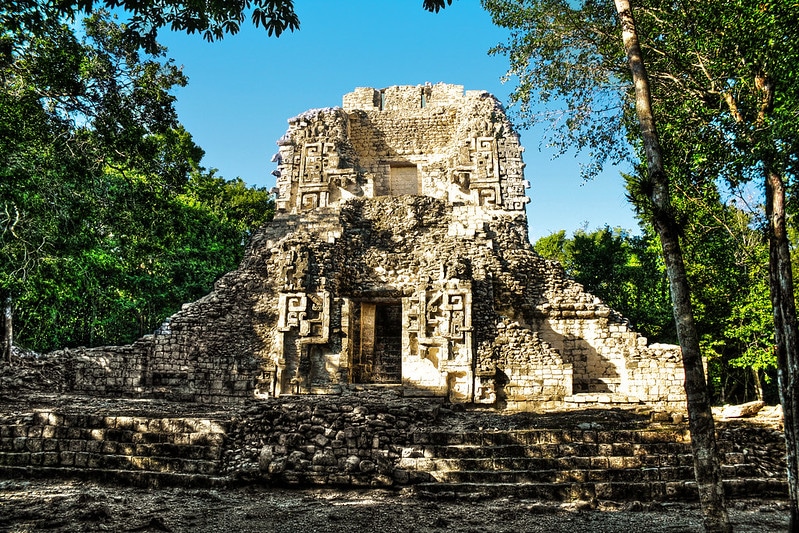The Giant Serpent Mouth at Chicanna

It’s hard not to overuse the word “mystical” when you’re describing Mayan archeological sites. It’s even harder not to use it here, as Chicanna was almost exclusively dedicated to the worship of gods, as is obvious by its various temples.
Oh, and by that door that forms a gigantic fanged snake’s mouth that led to the underworld.
Chicanna and Becan
Chicanna had a close relationship with Becan, another city close by. It is thought these two served different purposes. While Becan was more geared towards government, military, religion, and the economy, Chicanna was smaller and richer, though it still depended on Becan. Both sites feature similar elements, such as their architecture, but Chicanna, the rich being rich, is more ornamented.
The raised buildings
We all know how it is. The higher the building, the closer it is to celestial beings. The Mayans who built this place didn’t decide on its location by accident. Where better to build your center of religious ceremonies than a zone that has a natural elevation?
Optical illusions are another feature of the buildings found here. The original designers liked to fool you by carving what look like active stairways and doorways from afar. However, once you’re a little bit closer, you realize they’re all fake.
Chicanna’s big serpent mouth
This single doorway is what gave this place its name. Chicanna actually means “house of the serpent’s mouth”. The serpent in question is Itzamna, one of the top dogs—or top gods—in Mayan mythology, to whom it’s devoted.
Who knows how much time it took, but the doorway is extremely detailed, not only around the entrance but the walls that surround it as well. You could spend hours with your nose to the wall, looking at every detail. Step back, however, and take it all in as a single shape and you’ll see it forms the gigantic face of a snake, with fangs and fiery eyes—Itzamana’s mouth.
Not everybody dared to cross it either. It was believed this was an entrance to the underworld, and only priests were allowed. Enter at your own risk.
